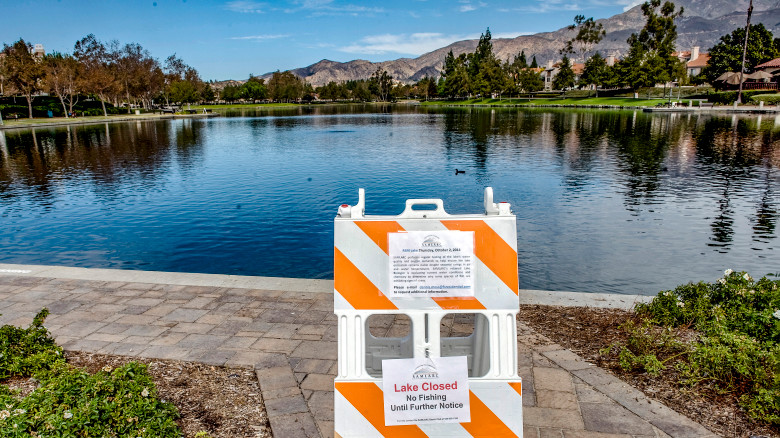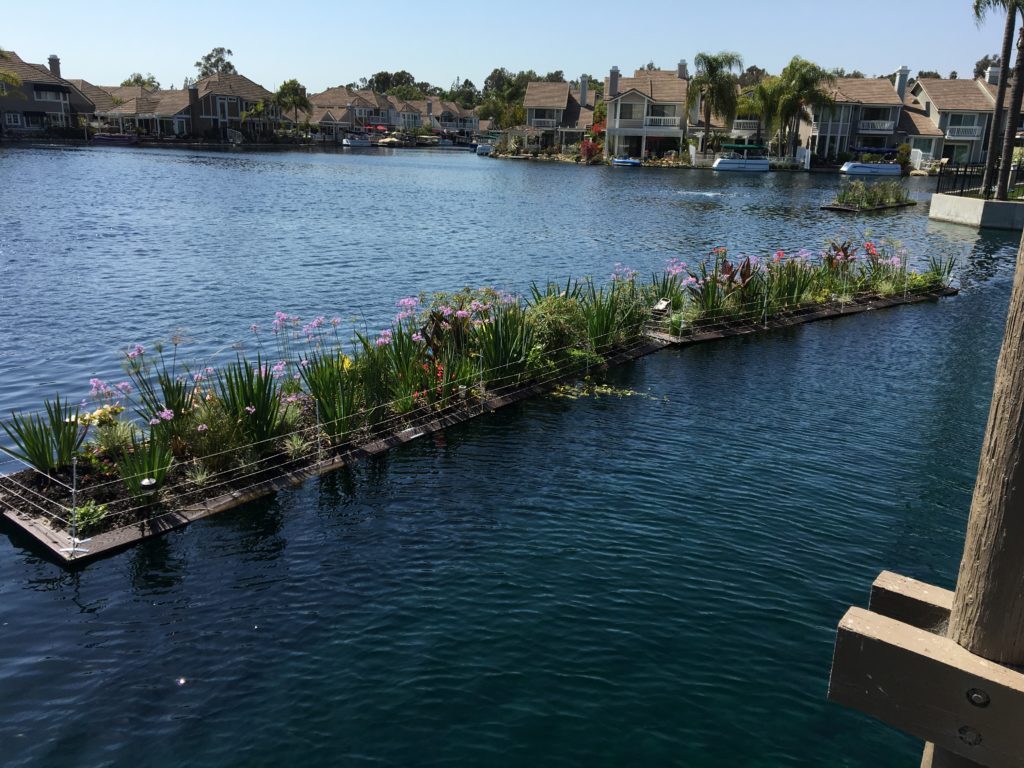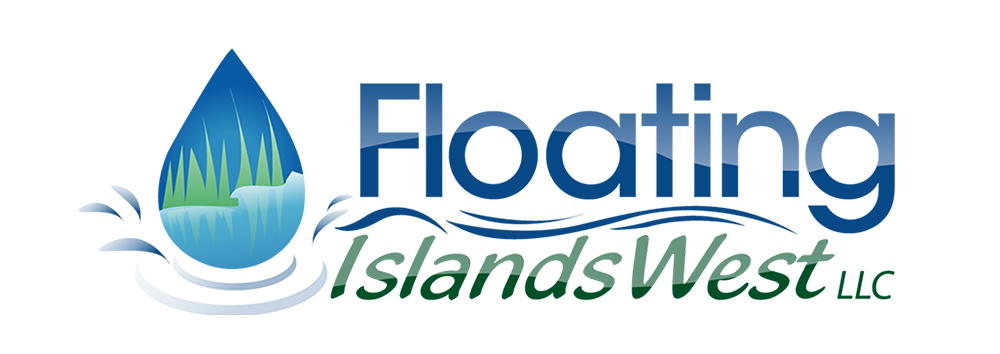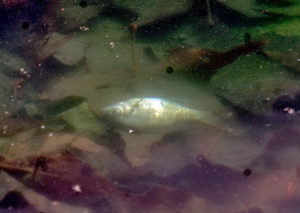
Floating Islands and doing our part in the battle against toxic algae…

Should I be concerned about Harmful Algae Blooms?
You may have heard from many of the recent news articles and stories about lakes and ponds being temporarily shut down due to a form of toxic algae. More recently, we’ve heard about dogs going in for a swim and getting sick from the contaminated water. There have been at least two recent reports of dogs dying as a result of toxic blue green algae.
What is the cause for concern? It seems to be a normal thing over the last few years, people who used to go swimming or fishing in their local pond or lake, are now unable to do so due to the lake or pond being temporarily shut down. You can fish…but only for a while, that is until the swarm of microscopic single-celled organisms- otherwise known as cyanobacteria or blue-green algae- take over and begin their feeding frenzy…eventually, they eat so much that it becomes out of control and your water is no longer fishable or swimable. These microorganisms start multiplying and eventually produce a toxic form of algae that is not only harmful to humans, but to animals as well. The water becomes so contaminated and dangerous, causing illness and sometimes even death.
Our company was fortunate to be a part of something amazing. There are a few communities here in California facing the challenge of controlling algae, these tiny organisms are leading to huge and often costly problems. One community in particular reached out to our team in search of a chemical free solution to their Golden Algae Problem…
Santa Margarita Pilot Project
The Lago Santa Margarita Ad Hoc Committee was formed in 2017 to provide input and recommendations related to the treatment and management of golden algae, with the primary goal of providing and aquatic environment where fish could thrive and fishing be restored.
The Restoration Project was created in 2018 to balance the Lake’s water quality, mitigate golden algae blooms, and prepare the Lake for completion of the Repair Project. The Restoration Project will be completed in three phases:
-
Lake infrastructure modifications and installation of floating botanical islands.
-
Partial Lake drain and refill with recycled water.
-
Construction of a water fill feature (same as Repair Project).
Phase 1 includes two key elements:
-
Installation of twenty-two (22) floating botanical islands along the perimeter of the Lake. Floating botanical islands will absorb excess nutrient buildup, provide underwater havens for fish, and help oxygenate the water.
The botanical islands act as floating plant beds. The plants on each island will send roots down into the Lake’s nutrient-laden water. As the plants grow, they will establish complex root systems that thrive on the nutrients in the water, competing with the golden algae population. The golden algae will not be able to gain control of the nutrient resources, as the total square footage of the islands has been calculated to outperform the golden algae. When denied nutrients, the golden algae will not be able to grow and bloom as potently or frequently. Additionally, the root systems will both oxygenate the water and provide underwater havens for aquatic life.
-
Installation of fine-bubble diffusers on the bottom of the Lake. Fine bubble diffusers force minuscule air bubbles up through the Lake, creating water movement and increasing oxygen levels within the water. The water movement will loosen the sediments along the bottom of the Lake, making more nutrients available for plants.
These elements supplement the long-term goals of the Repair Project by providing competition for golden algae, increasing water movement, and reducing the levels of nutrients in the water.
Special thanks to Rancho Santa Margarita for the valuable information and progress on their floating islands. Visit their page to learn more and see updates.
THAT WAS THEN…
California: Santa Margarita’s Golden Algae Bloom – November 08, 2017
What is that smell? Why are the fish dying?
Golden Algae Bloom Update: On Saturday, November 4, the Lago Santa Margarita Lake began to experience a golden algae bloom otherwise referred to as a “fish kill.” You may have noticed a rather strong odor and unpleasant sight. Historically, the Lago Santa Margarita experienced its first ever golden algae bloom in October 2014, and again in October/November 2015, which resulted in a similar ecology incident.
For incidents such as these, the timeline can vary from a couple days to a week or potentially longer. Factors as to why this incident occurred can only be theorized by fluctuations in the weather, water runoff from rain or other natural occurrences. As soon as SAMLARC staff noticed that the fish were perishing due to the algae bloom, staff immediately started to remove the expired fish from the Lake to dispose of them properly and continue to do so multiple times per day.
Many factors come into account when managing a Lake affected by golden algae. The water cannot be completed eradicated of the algae as reintroduction of the algae is inevitable. Golden algae (Prymnesium parvum) is a single-celled organism that occurs worldwide, primarily in coastal waters, but it is also found in rivers and lakes. The presence of golden algae doesn’t always cause problems, but when it “blooms,” (enters a phase of rapid growth and reproduction) the algae can produce toxins that cause a “fish kill.” The toxins affect organisms that have gills including; all types of fish, freshwater mussels and clams, and the gill-breathing juvenile stage of frogs and other amphibians. The turtles, birds and crayfish should not be affected by golden algae.
Unfortunately, once a bloom is underway there is no proven method of stopping the bloom. Per SAMLARC consulted aquatic life experts, the only viable option is to let nature take its course. SAMLARC staff will continue to work with the Lake management vendor to monitor the Lake both by boat and on shore with extra ongoing daily clean-up of the Lake for the duration of the golden algae bloom.
While Golden algae runs its course, Lake visitors may notice a smell and continue to see fish that have perished at the water surface. Please see the article below for further information.

Golden Algae Bloom Results in Fish Kill
November 04, 2017
Golden Algae is a natural occurrence in fresh water lakes. It can lay dormant for months, and suddenly bloom. When Golden Algae blooms, it releases a toxin that is harmful to fish, causing the fish to die. There is no effective short term or long term treatment for Golden Algae at this time.
Golden Algae is known to most frequently bloom during the months of October and November. Although Lago Santa Margarita successfully went through the month of October without a bloom, Golden Algae has released its toxins, resulting in what is referred to as a fish kill which began Saturday morning, November 4th. SAMLARC staff is onsite all weekend to remove stressed fish and fish that have perished due to the Golden Algae bloom.
SAMLARC is developing a project to address Golden Algae through reducing salinity and the Total Dissolved Solids (TDS) in the Lake. However, the project is not scheduled to begin until 2018. We ask for your patience and understanding as we address the current Golden Algae bloom.
TO FOLLOW THE PROGRESS OF RANCHO SANTA MARGARITA’S WATER QUALITY, VISIT THEIR PAGE AT www.samlarc.org/lake-updates
THIS IS NOW…

“Floating Islands West and Jonathan Todd Consulting have transformed our lake. What was budgeted to be a pilot, proved to keep the entire lake clear of any ill effects from the Golden Algae. The water quality, clarity, and overall health of the lake are better than in my memory going back to childhood. We have original homeowners on our lake that have lived here for over thirty years coming in to tell us how wonderful the water looks and that it has never looked anywhere near this nice. Using ecological design strategies JTC and FIW have transformed this lake without the use of any chemicals.” We have not treated our lake with any form of chemical in almost two years.

